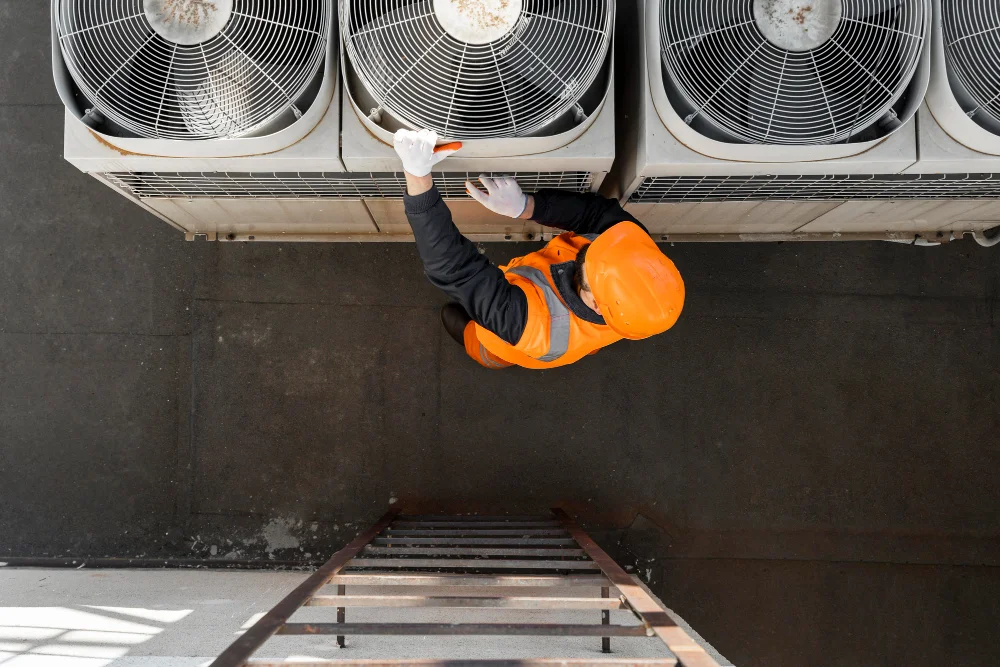As summer temperatures climb, a reliable cooling system isn’t just a luxury—it’s a necessity for comfort and well-being. However, many homeowners wait until their AC unit breaks down in the middle of a heatwave before giving it any attention. Proactive maintenance can prevent costly repairs, improve energy efficiency, and extend the lifespan of your system. This guide will walk you through several smart solutions to ensure your cooling system operates at its best, keeping your home comfortable all season long.
1. Regularly Clean or Replace Your Air Filters
One of the simplest yet most effective maintenance tasks is regularly checking your air filters. Clogged and dirty filters are a primary culprit behind reduced airflow and decreased efficiency. When a filter is dirty, it forces your system to work harder to circulate air, which increases energy consumption and puts unnecessary strain on the unit’s components. This strain can lead to premature wear and tear and eventual system failure.
For most homes, it’s recommended to check filters monthly and replace them at least every three months. However, if you have pets, live in a dusty environment, or have family members with allergies, you may need to replace them more frequently, perhaps every 30 to 60 days. A clean filter not only improves airflow but also enhances your home’s indoor air quality by trapping dust, pollen, and other airborne particles.
2. Keep the Outdoor Condenser Unit Clear and Clean
Your cooling system’s outdoor unit, the condenser, plays a crucial role in releasing the heat absorbed from inside your home. For it to function efficiently, it needs unobstructed airflow. Over time, leaves, grass clippings, dirt, and other debris can accumulate around the unit, blocking the fins and restricting air circulation. This forces the system to work harder to dissipate heat, leading to higher energy bills and potential overheating.
Make it a habit to inspect the area around your condenser unit. Trim back any shrubs, weeds, or overhanging branches, ensuring there are at least two feet of clear space around the entire unit. You can also gently clean the condenser fins using a soft brush or a garden hose with a low-pressure nozzle. Be careful not to bend the delicate aluminum fins during cleaning. A clean outdoor unit is essential for optimal performance.
3. Check and Seal Your Home’s Ductwork
Your ductwork is the circulatory system for your home’s conditioned air, but studies show that the average home can lose 20 to 30 percent of its cooled air through leaks, holes, and poorly connected ducts. This wasted energy means your system runs longer to cool your home, leading to higher utility costs and uneven temperatures from room to room.
Periodically inspect visible ductwork in your attic, crawlspace, or basement for any signs of leaks, such as disconnected joints or torn sections. You can seal these leaks using mastic sealant or metal-backed tape—regular duct tape is not a durable solution. Ensuring your ducts are properly sealed is a significant step toward improving your system’s efficiency and overall home comfort. For hard-to-reach areas or a more thorough inspection, professional duct sealing services can be a worthwhile investment.
4. Install a Programmable or Smart Thermostat
Upgrading your thermostat is a smart investment that offers both convenience and significant energy savings. A programmable thermostat allows you to set different temperatures for various times of the day, so you’re not needlessly cooling an empty house. For example, you can set the temperature higher when you’re at work and have it automatically cool down just before you arrive home.
A smart thermostat takes this a step further. These devices can learn your household’s patterns and preferences, automatically creating an optimized cooling schedule. Many can also be controlled remotely via a smartphone app, giving you the flexibility to adjust your home’s temperature from anywhere. According to the U.S. Department of Energy, using a programmable or smart thermostat correctly can save you as much as 10% a year on heating and cooling costs.
5. Ensure Proper Airflow Inside Your Home
Even with a perfectly functioning AC unit, poor airflow within your home can lead to uncomfortable hot spots and reduced efficiency. The problem often lies with blocked vents and registers. Furniture, rugs, or drapes can inadvertently cover air vents, obstructing the flow of cool air into a room.
Take a walk through your home and check that all supply and return air vents are open and clear of any obstructions. It’s a common misconception that closing vents in unused rooms saves energy. In reality, this can disrupt the pressure balance in your HVAC system, causing it to work harder and less efficiently. Keeping all interior doors open can also help promote better air circulation throughout your house, allowing the cooled air to distribute more evenly.
6. Schedule Annual Professional Maintenance
While these DIY tips are effective, they don’t replace the need for professional servicing. An annual tune-up from a qualified HVAC technician is crucial for maintaining your system’s health. During a maintenance visit, a technician will perform a comprehensive inspection, clean internal components like the evaporator and condenser coils, check refrigerant levels, and test electrical connections.
This preventative care ensures your system runs safely and at peak efficiency. It can also catch minor issues before they escalate into major, expensive problems. If you notice your system is struggling to keep up or making unusual noises, it may be time to seek professional air conditioning repair in Draper or your local area to diagnose the issue correctly. Regular professional check-ups are the best way to ensure peace of mind and a cool, comfortable home.


